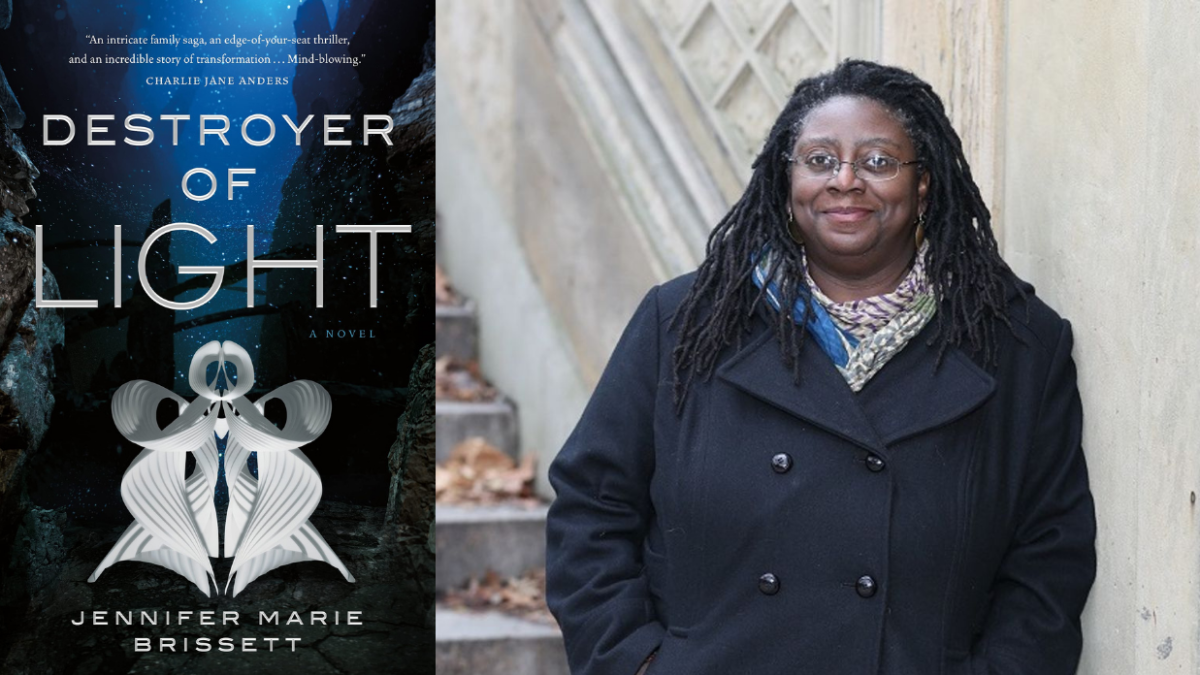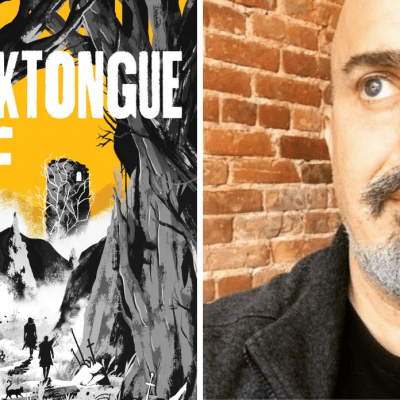Destroyer of Light: Jennifer Marie Brissett Puts Persephone in Space
“Come for the mystery, stay for the ending.” We talk to author Jennifer Marie Brissett about science fiction novel Destroyer of Light.

This article is sponsored by 
Destroyer of Light, Jennifer Marie Brissett‘s transporting new sci-fi novel, is a speculative fiction retelling of the Persephone myth set far into the future and light years away. The fast-paced, non-linear story unfolds over twelve chapters, and encompasses multiple perspectives over many years, bringing the reader to a world entirely unlike our own, yet endlessly informed by it. The setting? After the destruction of Earth, human refugees settled on the planet Eleusis and spread across its three habitable zones: Day, Dusk, and Night. Humans live alongside the Krestge—the very aliens whose annihilation of Earth forced humans to flee the planet-in an uneasy coexistence. Some humans embrace the Krestge and others regard them with fear and suspicion.
“What inspired this multiplicity of perspectives,” Brissett tells Den of Geek, “is my imaginative self thinking of what it might be like to experience being at the speed of light when time no longer moves forward or backwards, but everything happens at once.”
The world of Eleusis is strange, yet familiar. The planet is tidal-locked with its sun, which means half is frozen in perpetual night and the other is burning in day, with its habitable zones in the middle so named because they remain in those states. Humans may have left racism behind, as the surviving population is largely made up of Brown-skinned people—a fact that is not expounded or dwelled on—but caste systems still exist. There are haves and have-nots; wealthy city-dwellers in Dusk, poor farmers in Dawn, and the ever-growing forces of a guerilla militia in Night.
In Dusk, humans and krestsge coexist in relative harmony. But outside the city, humans—some who have never seen krestge in person—have much more disdain for the mysterious aliens. It is unclear to anyone why they followed humans to Eleusis, and the ambiguity of their intentions make them an ominous presence.
The story follows Cora, a young woman with a unique and powerful gift. Twins with uncanny abilities of their own, contracted to find the missing child of a human and krestge couple. An intelligence who sees all but cannot interfere. And a mother, moved to grief at the loss of her daughter. These characters’ individual journeys intersect and overlap as their stories begin to converge. And as we explore Eleusis from each of their varying perspectives, we uncover the truth of their abilities, and learn more about the world they inhabit.
“I began the structure of the book using index cards and a numbering system that helped me to keep track,” says Brissett of the writing process, which involved intricate science fiction worldbuilding. “Then as the book began to take shape, I pulled the scaffolding away like building a Roman arch.” The characters’ stories are separate but intertwined, distinct but connected, and cover large spans of time, though taking place all at once. “The story occurs in a single moment and what we read is the perspective of two entities entwining,” continues Brissett. “They come together and experience the past, the present, and the future all at once in the ‘Here and Now.’”
Destroyer of Light is not just about the fraught relationship between humans and krestge, it is also a story of survival—and hope. And it is told along the framework of the Persephone story. In Greek mythology, Persephone is abducted by Hades into the Underworld where she became his unconsenting bride. Her mother, Demeter, is so distraught by her daughter’s disappearance that she destroys the harvest and plunges the world into famine. Eventually, Zeus would decree that Persephone spend one-third of the year in the Underworld, which she is bound to because she ate its food. The rest of the year would be spent with her mother on Earth.
“To be honest, I didn’t think, oh, here’s a myth that I would like to retell,” says Brissett of the reimagining. “It was kinda the other way around. I had an idea for a story about two women – a mother and daughter. The Eleusinian Mysteries naturally came to mind, or at least it naturally came to my mind. As I began to structure the novel, I could see the myth fitting into it. The more I worked, the more I found interesting aspects of the myth that I could use … So which came first, the myth or the story? I would say the story. The myth simply helped it along and, I believe, gave the story more resonance.”
In Destroyer of Light, Stefonie is raised by the warlord, Okoni, who takes her for his bride after she and other children are forcefully recruited into his militia. The book does not look away from her plight, and interspersed throughout are several depictions of sexual assault. The book includes a content warning, which Brissett insisted on because she felt that it was important to give a heads up to readers about these scenes. Those warnings should be heeded.
“The assault is an essential part of the Persephone myth,” says Brissett. “More importantly, it’s a part of the lives of girls who’ve been forced to become ‘war wives’ in actuality. I didn’t want to sugarcoat or romanticize sexual assault. I think that happens too often in fiction, especially in genre. Children all around our world at many times in history have been forced into armies to fight against their will. Too often the plight of what it’s like to be a girl caught in those circumstances is either forgotten or ignored.” Brissett does not shy away from the ugliness, but neither does she delight in it. Destroyer of Light is not flowery or romantic, and not for those looking for something simple or lighthearted.
Destroyer of Light is abstract. It is both a summary of several independent perspectives condensed into a singular narrative, and an exploration of the metaphysical–abstract in thought and in practice. “I hope to fill my reader’s minds with wonder and curiosity,” says Brissett. Each character is the hero of their own story, and they all inhabit the nebulous space between good and bad, making for interesting protagonists.
The best stories are those that linger, that make you ponder long after you’ve put the book down. Destroyer of Light will stay with you after you’ve read the final page, in large part because of the intention Brissett put into the complex morality of its world.
“There are a lot of grays in this book,” says Brissett. “Who are the heroes? Who are the villains? What is right and what is wrong? After reading the book, deciding which is which may not be so easy. Just as in life, everyone believes they are doing the right thing. I would like the reader of this story to decide for themselves what they think.” Destroyer of Light offers readers an opportunity to make their own interpretations and find their own truth.
Destroyer of Light is out now. Find out more here.

